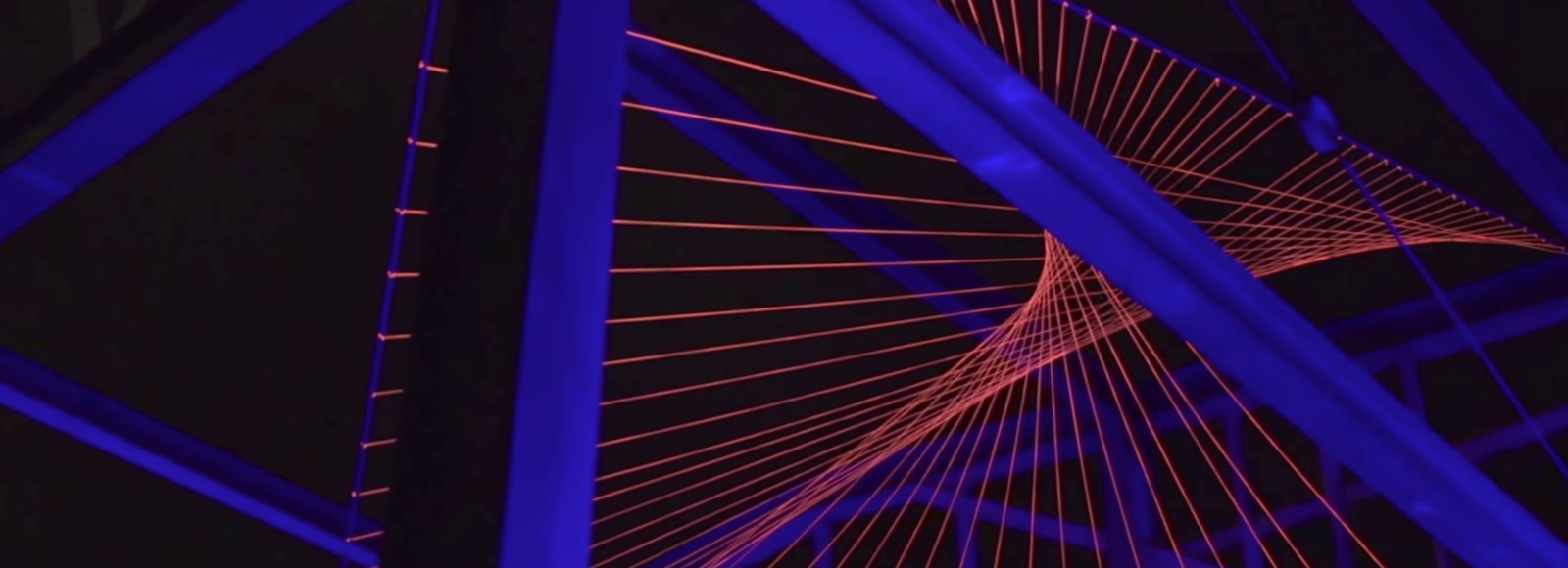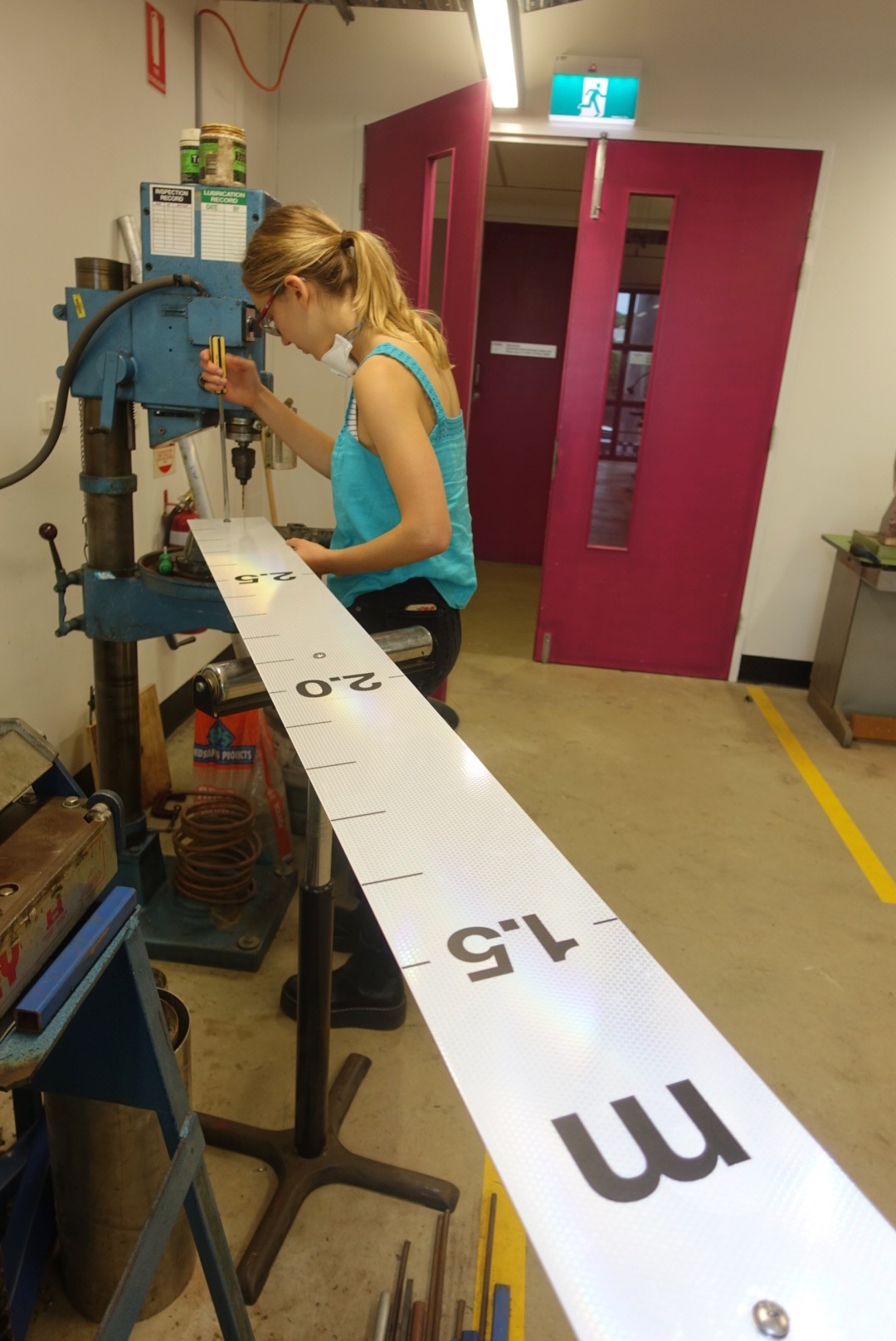
Art & Design and Arts & Social Sciences students transformed Randwick Environmental Park into a vibrant outdoor gallery.
Solar-powered installations created by Art & Design students formed a loop around the park and wetland for the annual NOX Night Sculpture Walk.
This year’s moonlit exhibition saw the first cross-faculty expansion of the community event with the addition of NOX Night Cinema, where students from the School of the Arts & Media screened their short films and animations.
Guided by artist and academic Allan Giddy, the Art & Design students produced work that responded to the overarching themes of global ecology, the site’s ecology and history, and community, inclusion and interaction. He says NOX Night introduced students to using off-grid energy in public art, while also creating a community connection with the University’s Randwick neighbours.
“NOX Night Sculpture Walk is a direct point of contact between the students and the audience through the site, both physically (site specific) and socially (site responsive).
“It can be testing for them, as they have to cope with off-grid energy restrictions, weather and a wide range of audiences’ perceptions of art,” Mr Giddy says.
“I see the students grow through this, in their ability to put artwork into challenging and unconventional sites and through their leadership and teamwork.
“NOX Night is a direct public exercise that eclipses typical student concerns about presentation and marking. It is trial by fire.”
All the artwork themes are underpinned by the mindful use of energy within the individual installations. Before creating them, the students were introduced to high-level solar research by Rob Largent and researchers from the School of Photovoltaic and Renewable Energy (Faculty of Engineering) for advice on powering their artwork by alternative energy systems.
Mr Giddy says the introduction of NOX Night Cinema this year provided an extra highlight at the end of the walk, where students from the School of the Arts & Media screened their short films and animations around themes of ecology and sustainability.
School of the Arts & Media lecturer Dr Greg Dolgopolov oversaw the films students’ contributed.
“We had around 30 students involved in presenting short films and animations, which gave them the opportunity to present ideas to a more mainstream audience,” he says.
“Most of the students have just finished their first semester, so the work is really fresh. It included short animations looking at themes like plastic in our oceans – so students tackled tough environmental issues using visual media to communicate ideas.”
Bachelor of Fine Arts student Natasha Abram says NOX Night feels like being thrown in the deep end, going from classroom critiques of your work to displaying it for the general public.
“When you have a whole environmental park to work with as a canvas, it can lead to so many possibilities but also be quite intimidating,” she says.
“The way you think about creating and the logistics go from 0 to 100 because you aren't in a regular gallery space. Nothing else forces you to grow as an artist as much as this.”
Ms Abram’s installation, CAUTION: Subject to Drought, turns the concept of the flood meter on its head.
“Flood meters measure the depth of rising water levels to indicate danger, but mine aim to do the opposite. They measure the risk when water level is too low.
“I had the idea after visiting the site and noticing that the wetland was completely dry. When I saw it, I knew I wanted to create work that responded to the water levels,” she says.

Ms Abram says she has valued the teamwork among the students involved with NOX Night and how they have learnt from each other.
“I’ve also learnt a lot about the complexity of keeping Randwick Environmental Park up and running, and the importance of its vegetation, wildlife, water supply etc. Working with renewable energy sources such as solar lights has definitely been a great learning experience too.
“Getting the chance to show hundreds of people how we’ve created all this using environmentally conscious resources is fantastic, and will hopefully help create a conversation about environmental conservation.”
